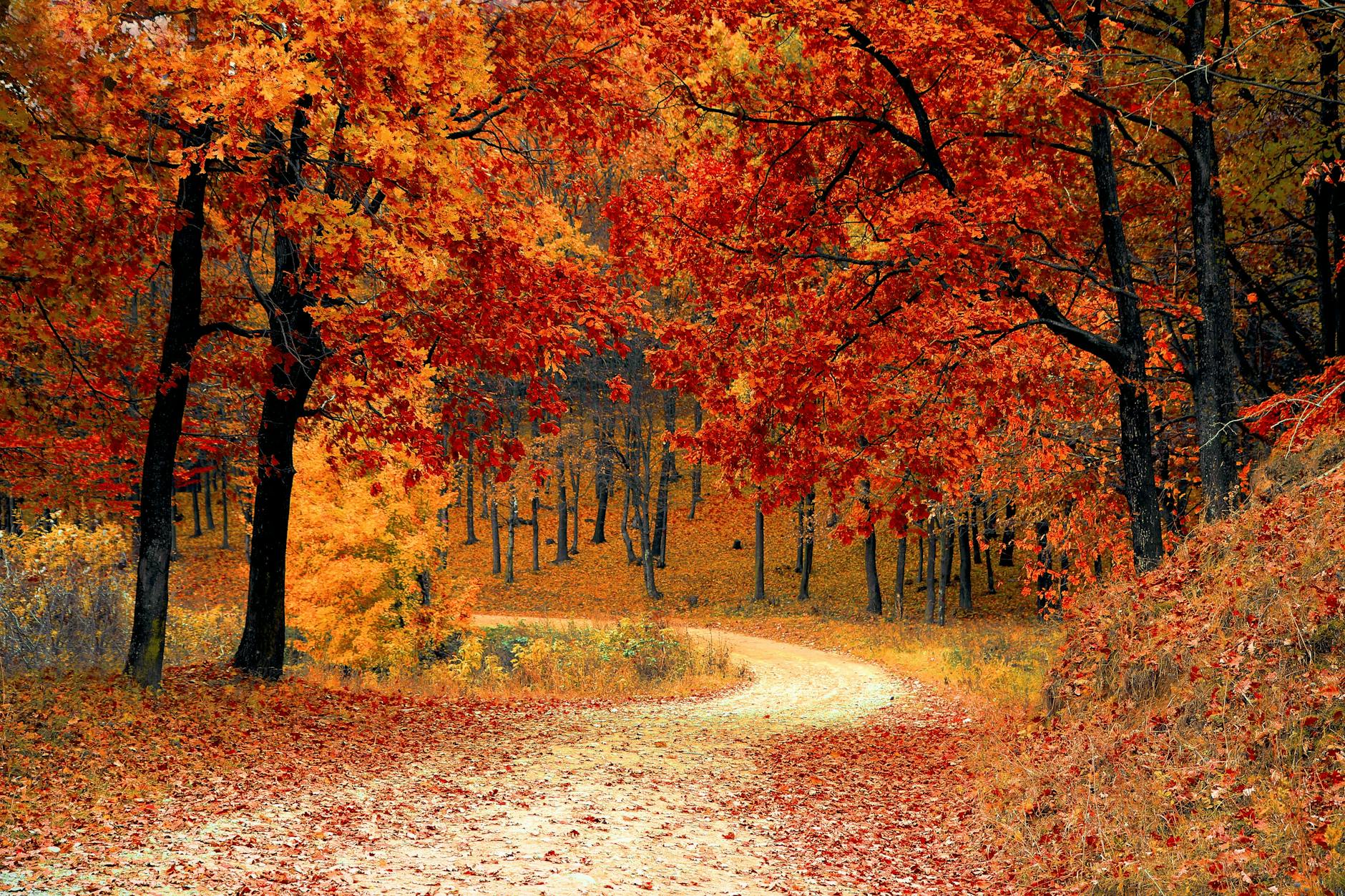The fascinating world of collective nouns provides specific terms to describe groups of trees, enriching our understanding of forest landscapes and natural environments. These terms not only add precision to our language but also paint vivid pictures of different tree arrangements in nature.
Common Collective Nouns for Trees
Stand
A stand refers to a small grouping of trees, typically of similar type or age. This term is particularly useful in forestry and ecological studies.
“The morning mist wrapped around the stand of birch trees, creating an ethereal scene”.
Grove
A grove describes a small group of trees without significant underbrush. This term often evokes a sense of tranquility and natural beauty.
“The ancient grove of olive trees has stood on this hillside for centuries”.
Forest
A forest represents a large area densely populated with trees and underbrush. This term encompasses complex ecosystems and biodiversity.
Orchard
An orchard specifically refers to an intentional planting of fruit or nut trees. This term is commonly used in agricultural contexts.
Plantation
A plantation describes a large-scale estate or farm where trees are cultivated for commercial purposes.
Specialized Collective Nouns
| Term | Description |
|---|---|
| Arboretum | Botanical collection of trees for education and science[4] |
| Avenue | Row of trees marking an approach or road[4] |
| Copse | Small woodland area, traditionally managed[4] |
| Spinney | Small wooded area managed for hunting[4] |
| Thicket | Dense, often impenetrable area of trees[4] |
Poetic and Literary Collective Nouns
Canopy
A canopy refers to the uppermost layer of foliage in a forest, creating a natural ceiling.
Cathedral
A cathedral of trees describes a majestic grouping of tall trees forming natural arches, reminiscent of Gothic architecture.
“The towering redwoods formed a natural cathedral, their branches intertwining high above like ancient rafters”
Gallery
A gallery of trees typically refers to trees growing along riverbanks, forming corridor-like formations.
Regional and Cultural Variations
Traditional Terms
- Holt: An Old English term for a small wood
- Weald: Ancient term for a forested area
- Covert: A thicket providing shelter for wildlife
Modern Usage
Different regions have developed unique collective nouns based on local landscapes:
| Region | Term | Usage Context |
|---|---|---|
| Australia | Bush | Natural woodland areas |
| Southeast Asia | Jungle | Dense tropical forest |
| Mediterranean | Bosque | Managed woodland |
| Nordic | Skogen | Natural forest area |
Scientific and Professional Terms
Forestry Classifications
Professional foresters use specific collective terms:
- Even-aged stand: Trees of similar age
- Mixed stand: Various species growing together
- Old-growth: Ancient, undisturbed forest
- Secondary growth: Regenerated forest area
Ecological Significance of Tree Groups
Ecosystem Functions
Different collective groupings of trees serve vital ecological roles:
- Habitat creation: Supporting diverse wildlife
- Soil stabilization: Preventing erosion
- Carbon sequestration: Mitigating climate change
- Water regulation: Managing local hydrology
Biodiversity Hotspots
Various tree groupings create unique microhabitats:
| Group Type | Ecological Benefit |
|---|---|
| Mixed woodland | High species diversity |
| Riparian grove | Water quality protection |
| Urban copse | Wildlife corridor |
| Ancient stand | Genetic preservation |
Cultural and Historical Significance
Sacred Groves
Throughout history, certain tree groupings have held spiritual significance:
“The sacred grove of oak trees has been a site of worship for over a millennium”
Historical Landmarks
Many collective tree formations serve as historical markers:
- Avenue trees: Marking ancient pathways
- Boundary trees: Defining historical territories
- Memorial groves: Commemorating significant events
Management and Conservation
Sustainable Practices
Modern approaches to managing tree groups include:
- Selective harvesting
- Natural regeneration
- Biodiversity preservation
- Community involvement
Conservation Strategies
Key approaches to protecting tree collections:
| Strategy | Purpose |
|---|---|
| Legal protection | Preserve ancient woodlands |
| Buffer zones | Protect from development |
| Restoration | Rebuild damaged ecosystems |
| Monitoring | Track health and growth |
Example Sentences with Collective Nouns
- “The ancient stand of sequoias towered majestically against the sunset sky.”
- “Scientists discovered rare species within the dense thicket of tropical trees.”
- “The avenue of maple trees created a stunning corridor of autumn colors.”
- “Local conservationists protected the historic grove of olive trees from development.”
- “The plantation of eucalyptus trees stretched as far as the eye could see.”
- “Children played beneath the protective canopy of the old oak trees.”
- “The copse of birch trees provided shelter for migrating birds.”
- “Researchers studied biodiversity in the mixed stand of deciduous trees.”
- “The cathedral of redwoods created a natural sanctuary in the forest.”
- “Farmers maintained the productive orchard of apple trees through careful pruning.”
- “The gallery of trees along the river prevented bank erosion.”
- “Students visited the arboretum to study different tree species.”
- “The sacred grove of banyan trees held cultural significance for the village.”
- “A small spinney of beech trees marked the property boundary.”
- “The forest ecosystem supported countless species of wildlife.”
- “The holt of ancient yew trees dated back to medieval times.”
- “Urban planners incorporated a covert of trees into the city design.”
- “The weald of oak trees preserved traditional British landscape features.”
- “Ecologists monitored the old-growth stand for signs of climate change.”
- “The bush of eucalyptus provided habitat for native Australian species.”
Key Takeaways
Collective nouns for trees enrich our language while providing precise terminology for different groupings. These terms reflect not only physical arrangements but also cultural, historical, and ecological significance. Understanding and using these collective nouns accurately enhances communication in fields ranging from forestry to literature.
Citations:
[1] https://allcollectivenouns.com/collective-noun-for-trees/
[2] https://leverageedu.com/explore/learn-english/collective-noun-for-trees/
[3] https://www.vedantu.com/question-answer/a-collective-noun-for-trees-class-7-english-cbse-61155c02facd6e4b5632a6bb
[4] https://gabrielhemery.com/collective-nouns-for-trees/
